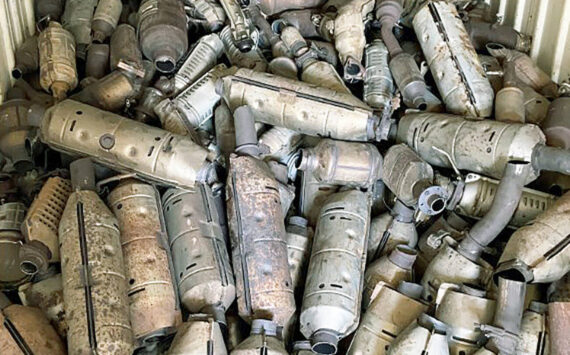NEWS HAS NOT BEEN good lately for Navy subs. First, the USS Greenville rammed through a Japanese fishing boat off Hawaii three weeks ago, killing nine. Then, at a hearing that concluded earlier this week in Bremerton, the Navy claimed one of its own submarine crewmen tried to sabotage the Bangor-based Trident nuclear sub USS Alaska by cutting at least 105 of its power and communications cables last fall. The accused, Petty Officer 2nd Class Ernesto Cimmino, 23, who allegedly also abused drugs and was having an affair with the wife of another Navyman, then supposedly engaged Navy investigators in a contest of wills. Aware he’d become a suspect, Cimmino telephoned investigators to ask if the Navy had caught him on videotape cutting cables, according to court testimony. In another call, prosecutors claim, he said he was just doing a college paper and wanted to know if polygraph results can be admitted at court martials.
Slightly built, with clipped, forward-swept ebony hair, Cimmino may defy any popular image of a nuclear saboteur. He’s a handsome kid in his black Navy uniform, a faint boyish smile flickering when he speaks in a soft voice. Charged with 23 counts of property destruction, conspiracy, theft, obstruction of justice, and drug use, he seems to be weathering his predicament. During a break in the preliminary hearing when he and I were the only ones left in the small, modern courtroom at Naval Station Bremerton, I asked how life was in the brig, where he’s been since the day after Thanksgiving. “It’s actually fun!” said Cimmino, who is from upstate New York and joined the service in 1997. He beamed and added, “Food’s good too.”
What the Navy believes Cimmino did, and what he actually did, may not be resolved for months. Evidence and testimony presented by the Navy prosecutor and Cimmino’s Navy attorney before an investigating officer who sits as a judge will result in a report and legal recommendation to the regional command. An admiral may then decide to order the court martial of Cimmino or exercise options, which include holding a disciplinary hearing or dropping the charges completely.
Among the questions to be answered is the motivation of whoever cut the cables. Massive sabotage or a crazy prank? Random vandalism or covert destruction? Outside the courtroom, a Navy officer told me he heard that cables had also been cut years earlier when the big aircraft carriers USS Ranger and USS Nimitz were at Puget Sound Naval Shipyard for refitting. “It means delays, and more port time for a disgruntled sailor,” he said. “Some are in no hurry to go back to sea.” Al Moore, a shipyard manager, testified that dozens of workers had to be assigned from other work to search through the miles of the Alaska‘s wiring for cuts and defects. So far, he said, “I can’t guarantee you I found everything that was done on board,” and a more thorough going-over is still needed.
THE NAVY HAS DISCHARGED at least two others who shared a home with Cimmino in Bremerton. In court, Cimmino’s counsel, Lt. Ryan McBrayer, portrays the missile mechanic as a fall guy for the others, someone who tried to impress his druggie girlfriend with juvenile tales of cutting harmless cables and now faces as many as 300 years in prison. The Navy says Cimmino has confessed, but McBrayer suggests that, if anything, he might have done only some of the cutting and possibly taken some souvenirs. Also found at the shared rental home were copper cable, an old missile alarm, a discarded missile launch status panel, tools, medical supplies and the nameplate from the captain’s stateroom. Unspecified drugs were found as well.
Though a Navy chief sat in on the hearing to halt proceedings and remove reporters if issues of national security surfaced, testimony depicted the sub as an immobilized, unthreatening nuclear weapon with its missiles removed and nuclear-propulsion system unaffected by the cutting. The Alaska, two football fields long and resting a few hundred yards away from the hearing room, has been dry-docked at the Bremerton yard since last summer for an 18-month conversion to more powerful Trident II missiles. Two 4- by 8-foot openings are cut in its hull for shipyard worker access; its forward compartments have been stripped to receive the new missile equipment and upgraded sonar and computer systems; and many, if not all, of the 100-plus cables that were partially or completely severed were dead wires.
More than 800 Navy yard workers and the boat’s two 150-man crews are at the site daily. From that “universe” of 1,100 suspects, said Gary Ross of the Naval Investigative Service (NIS) who headed the case, they whittled down the list to Cimmino. Probers’ methods included interviews, questionnaires, security camera surveillance, polygraphs, and profiling—10 of the ship’s chiefs were each asked to submit the names of three crewmen who fit the suspect profile: 18 to 28 years old, low in rank, and sensitive to criticism, among other things.
It wasn’t clear if any chief submitted Cimmino’s name (reporters were not allowed to see documents), but one sailor was named on two chiefs’ lists, and cleared. Profiling “is not an exact science,” Moore conceded, smiling, on the witness stand.
Apparently it was Cimmino’s girlfriend who fingered him by contacting investigators. The NIS taped two calls she made to Cimmino in which he allegedly discussed the cable cutting. His face was also seen on one of the 17 video cameras the NIS placed around the sub after the first cut cables were discovered in August. Though investigators collected 18,000 hours’ worth of tapes over two months, none showed anyone cutting cables. But one showed Cimmino looking into a camera and then repositioning it.
After searching Cimmino’s home and finding evidence, three investigators arrested him at Sea-Tac Airport the day after Thanksgiving, where, Ross said, “We obtained the admissions about him severing cables,” during a three-hour interrogation.
Cimmino, who did not testify, sat silently, pondering the sometimes arcane discussions of wiring, procedures, and incriminating testimony. During a break, I asked what he thought.
“I’m not sure what’s happening,” he said earnestly. “But I think it’s going OK.”








